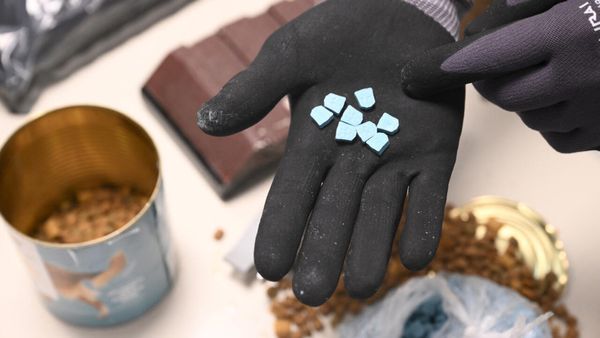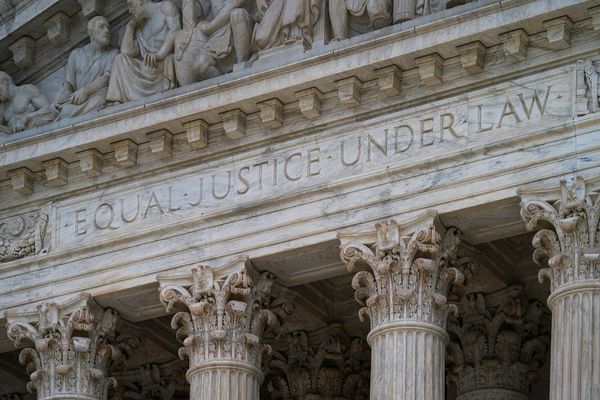In the third instalment of a four-part special, Chris Beesley looks at Everton’s long journey in building a new stadium to replace Goodison Park.
Peter Johnson dreamed big for Everton but ultimately most of his grand plans never came to fruition and that included an ambitious vision to quit Goodison Park for a huge bowl of a new stadium. By the mid-1990s, any post-Hillsborough clamour for Merseyside unity and a shared stadium had subsided and both the Blues and Reds were determined to go it alone, be it in ground redevelopment or moving to pastures new.
The Taylor Report, launched after the tragedy, called for all-seater stadiums which significantly reduced the respective capacities of both Goodison Park and Anfield at the same time that attendances were on the rise again because of an increased interest in the game after the formation of the Premier League. Liverpool would ultimately be able to redevelop by increasing their footprint on their existing site but with Goodison hemmed in on at least three sides, Everton looked to starting afresh elsewhere.
PART TWO: A third Merseyside 'cathedral' - how tragedy revived super stadium idea for Everton and Liverpool
The issue became a hot topic across the region and on December 14, 1996, the ECHO devoted a full page to letters on both sides of the debate. Gordon O’Rourke from Maghull wrote: “At last, a forward thinking, progressive board at Everton. A move to a new stadium is a must if we are to regain our place at the forefront of football.” However, Mrs Edith Russell from Anfield implored: “Goodison Park and Everton are my home and family. Leave it alone.”
John Thompson of Halewood warned: “Goodison is outdated and, alone or in partnership, Everton have to move to a new stadium or they too are in danger of becoming a great memory.” D Connolly of Burscough was more wary and mocked the changes that Mr Johnson had already brought in, including experimenting with ditching Z-Cars for other run-out tunes and bringing in a new mascot called ‘Dixie’ who was a half man/half toffee. They declared: “Mr Johnson should get real. This is not Middlesbrough, Sunderland or Derby County. This is EVERTON FC… and unlike the aforementioned, it is steeped in history and its home is, and always should be, Goodison Park, Goodison Road, Liverpool 4.”
Six months later, when Everton hosted Chelsea in their final game of the season on May 11 1997, fans voted on the issue having been presented with a glossy brochure which declared: “It’s your move – the choice is yours.” A pen and ink illustration showed a large bowl-type 60,000 capacity stadium (bigger than any in the Premier League at the time) with ample parking on a spacious, open site.
Supporters were asked “Do you want to stay with poor facilities and obstructed views (illustrated by photographs of Goodison urinals and one of the Main Stand’s chunky pillars) or enjoy an unhindered panorama of the ground.” Mr Johnson himself wrote to the fans in a grandiose letter in which he declared: “When I became chairman of Everton Football Club I made it be known that my ambition was to see this great club win the European Cup.”
Getting on to the matter at hand, he added: “We have recently completed a feasibility study for the redevelopment of Goodison Park. Sadly, the study shows that this option is not viable. However, this means that we now have an opportunity to move to a purpose built stadium just four miles away which boasts all the facilities that a club of Everton’s status demands.”
The only thing was, it was never confirmed just where this location would be. Kirkby Golf Course appeared to be the most likely option – an area that would prove hugely divisive a decade later – but other rumoured sites included Gillmoss and the village of Cronton which is closer to Widnes than Liverpool!
Some 30,000 brochures with voting slips on pre-paid cards were handed out to match-going fans and despite the lack of detail, 18,374 of respondents (approximately 84%) said yes to leaving Goodison with 3,600 against. A group called Goodison for Evert-ton raised concerns over Mr Johnson’s pipedream, hiring the architect responsible for the redevelopment of Twickenham, the home of English rugby union, to support their claims that Goodison could be transformed into a modern 50,000 capacity stadium on its existing site, but they’d needn’t have worried because it remained just that.
Over a year on, as the Blues began the 1998/99 season, Mr Johnson was still bullish about the project. In an interview with club magazine The Evertonian, he stated that the ground move plans were back on the agenda following the completion of a long-awaited feasibility study and its findings would be discussed by the board over the next couple of months before a final decision was made.
The Christmas Hamper magnate claimed that the club had whittled down its search for suitable sites from 10 to five and that all the remaining possibilities were within the city boundaries but he had relinquished the chairmanship by the end of that calendar year after controversially selling star striker Duncan Ferguson to Newcastle United without manager Walter Smith’s knowledge and before 1999 was out he had sold his controlling stake in the club to Bill Kenwright.







